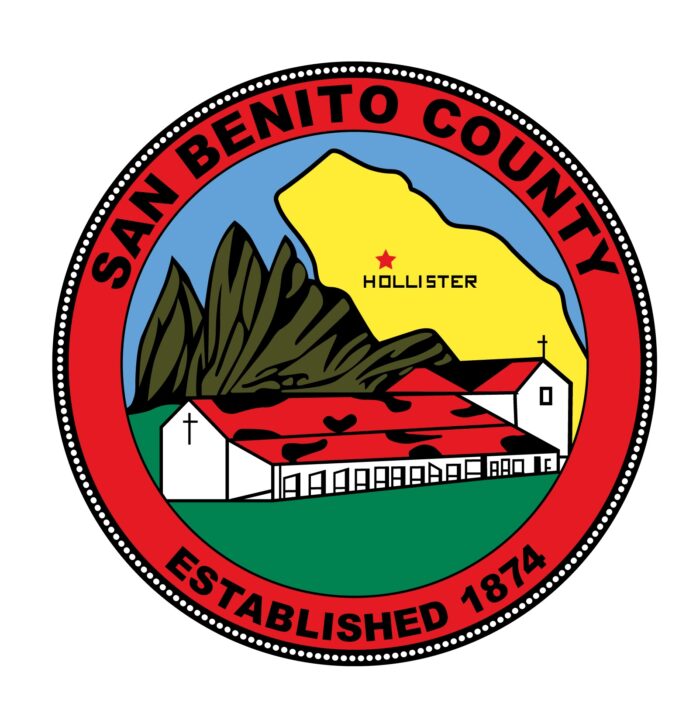San Benito County, the City of Hollister and other local jurisdictions are in the process of figuring out how to spend more than $20 million they expect to receive from the American Rescue Plan, a massive federal stimulus program approved earlier this year to combat the economic impact of the coronavirus pandemic.
Exact allocations to cities and counties from the $1.9 trillion stimulus plan have not been finalized, but San Benito County officials anticipate about $12.2 million from the American Rescue Plan. That’s a big chunk of money for a county that has a general fund budget of about $63 million for 2020-21. Supervisor Kollin Kosmicki at the April 13 board meeting called the sum a “one-time windfall,” and his colleagues agreed they should take their time to carefully consider how to invest the stimulus funds in a way that will benefit the county over the long term.
“(We) have to treat these dollars as preciously as we treat the limited funding we have,” Kosmicki said. “We really need to maximize this.”
The City of Hollister is expecting about $7.6 million from the American Rescue Plan, according to Mayor Ignacio Velazquez. The City of San Juan Bautista anticipates gaining about $760,000 in new federal stimulus funds, City Manager Don Reynolds said.
President Joe Biden signed the American Rescue Plan Act into law on March 11. The plan dedicates about $65.1 billion in direct aid to counties throughout the nation—and about $55 billion to cities and towns—through the Coronavirus Local Fiscal Recovery Fund.
In California, the state itself expects to receive about $26 billion from the American Rescue Plan. Cities and counties in California will collectively receive another $16 billion, according to the Legislative Analyst’s Office.
Jurisdictions—including local school districts—that receive American Rescue Plan funds can use the money only for specific purposes identified in the law. According to the LAO, permitted uses of the funds are: respond to the Covid-19 public health crisis or its negative economic impacts; support essential work; fill in revenue losses that have occurred since 2018; or water, sewer or broadband infrastructure.
The wording of the federal law leaves some of the listed uses open for interpretation, and San Benito County staff is awaiting further clarification on how they can spend the money.
Local jurisdictions will receive their share of American Rescue Plan funds in two installments. The first will be doled out by early May, and the second will come in at least a year later. The deadline to spend the funds is Dec. 31, 2024.
Though they don’t have the money yet, local officials are starting to plan how they will use the stimulus funds. The San Benito County Board of Supervisors discussed the options at the April 13 meeting. County Administrative Officer Ray Espinosa will draft a detailed plan to spend the money on permitted local uses over the coming weeks.
Supervisor Bob Tiffany called the anticipated American Rescue Plan funds “an opportunity.”
“This is a lot of money, and there is a tremendous need in our county,” Tiffany said. “It’s very important we take the time (to look) at this to really evaluate where our priorities should be, and how we should spend the money.”
Kosmicki and Board President Mark Medina suggested that if the county can spend the stimulus funding on its roadway infrastructure, they should make that a top priority.
“What’s the most common complaint we receive? It’s roads,” Medina said. “It’s the wisest and smartest capital expenditure we can make.”
Supervisor Peter Hernandez recommended that a sizable portion of the stimulus funds be used to boost the local tourism industry—one of the allowable uses listed in a county staff report. Investing funds in efforts to promote San Benito County and attractions like Pinnacles National Park to outside visitors will bring a reliable long-term stream of revenues into county coffers, Hernandez argued.
In the City of Hollister, Valezquez said the city council and staff are “waiting for the full details on how the money can be used before we start making plans.”
Reynolds said in San Juan Bautista, the council has yet to take action on how to spend that city’s share of American Rescue Plan funding. He noted that the city has spent about $300,000 on the “transformation of Third Street” to help downtown businesses adapt to public health guidelines. Of that amount, the 2020 federal coronavirus stimulus package—known as the CARES Act—has paid for about $50,000 in reimbursement.
The coronavirus pandemic and related public gathering restrictions have taken an unprecedented toll on public revenues for cities and counties throughout the region. Reynolds said San Juan Bautista has suffered significant losses in sales tax and transient occupancy (hotel) tax revenues, but the city “could break even” if it can use American Rescue Act funds to backfill those losses.
Local cities are subject to the same restrictions on the use of the stimulus funds as the county and other jurisdictions.
The American Rescue Plan also includes direct assistance to local school districts and state educational programs. Details of recipients in San Benito County were not available at press time. The federal package also includes direct payments to individuals and families, vaccine distribution assistance, housing assistance, transportation upgrades, small business loans and extended unemployment benefits.








